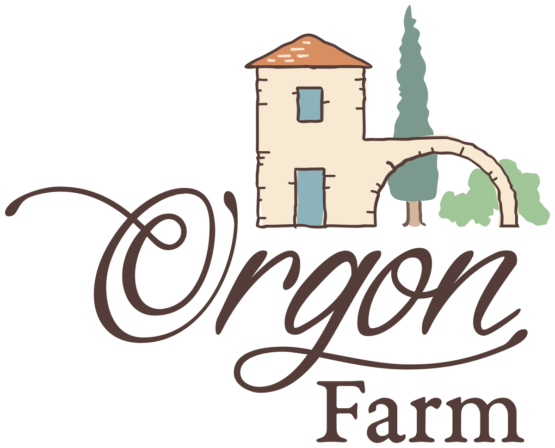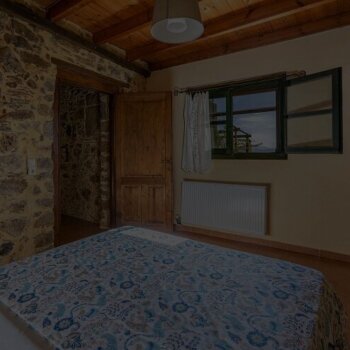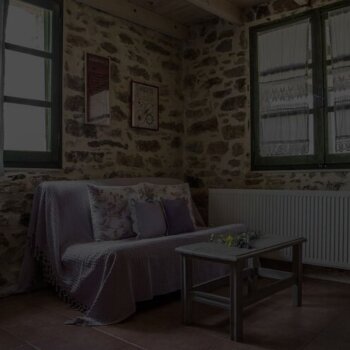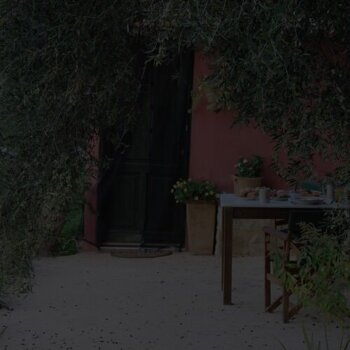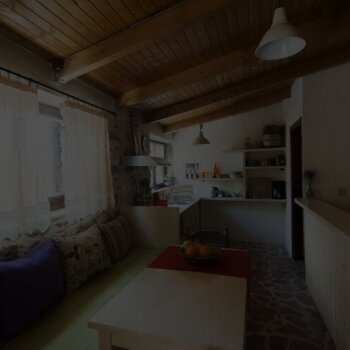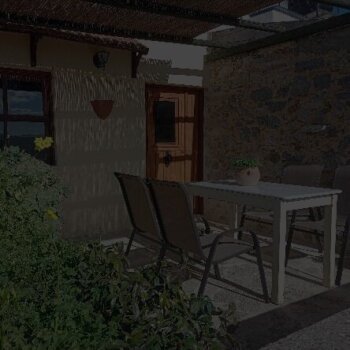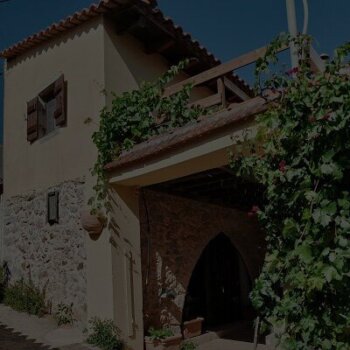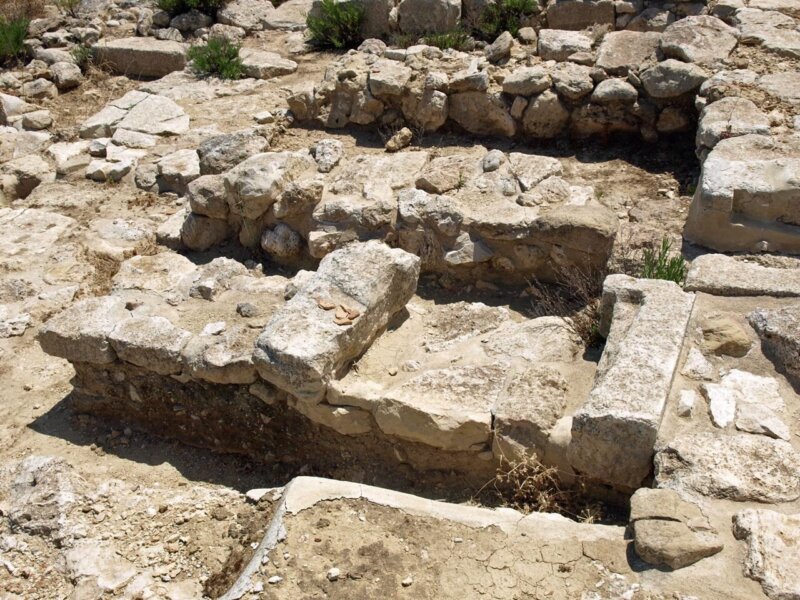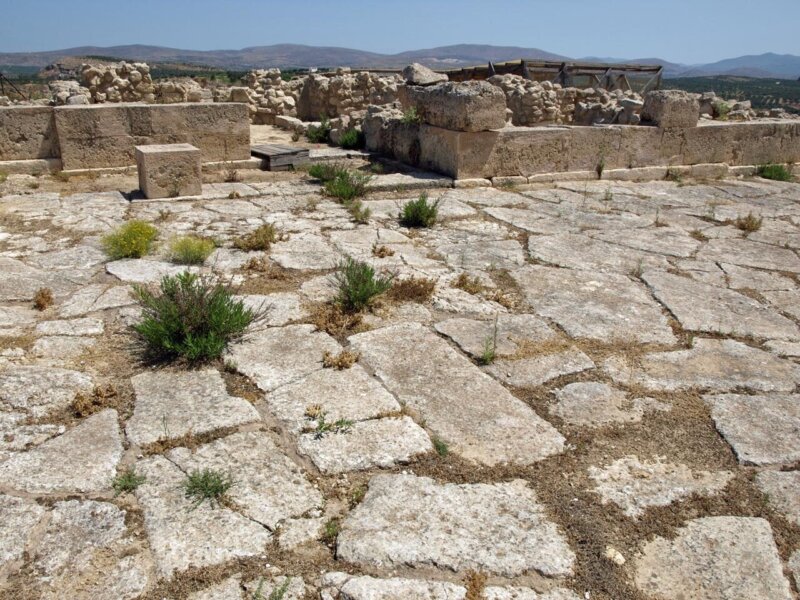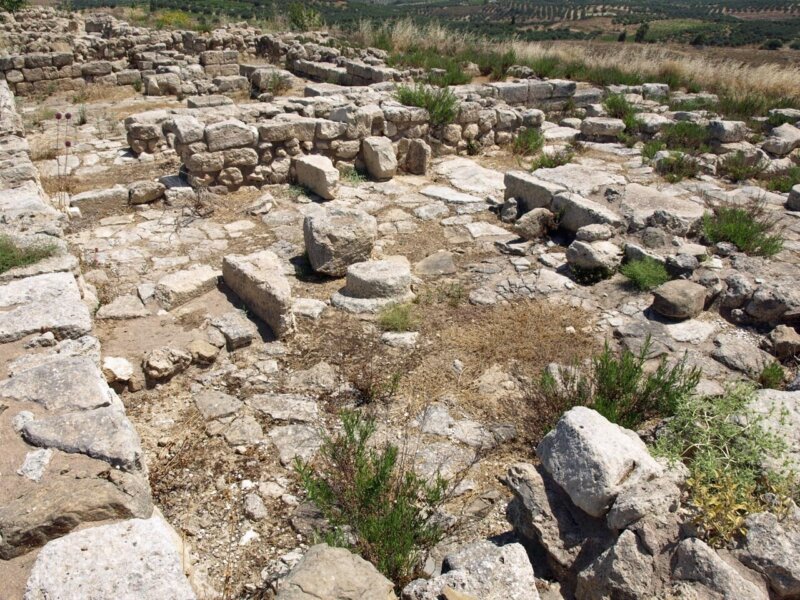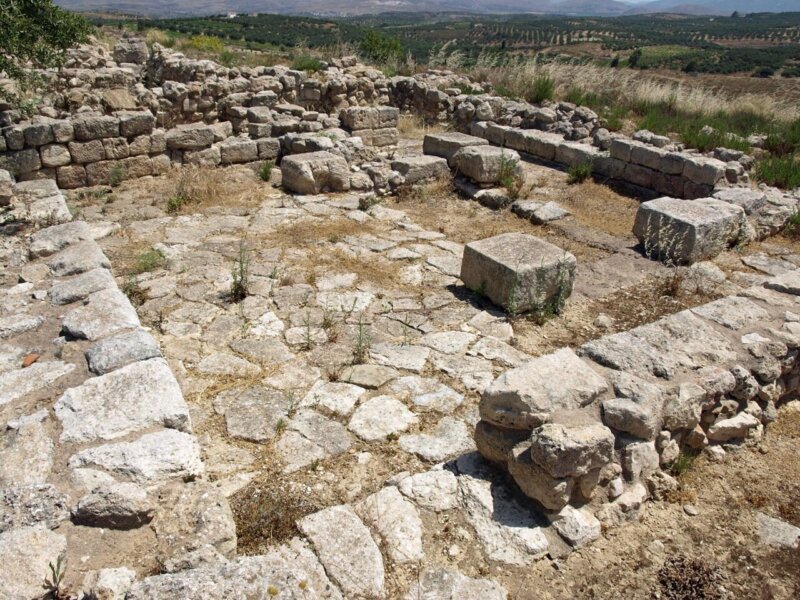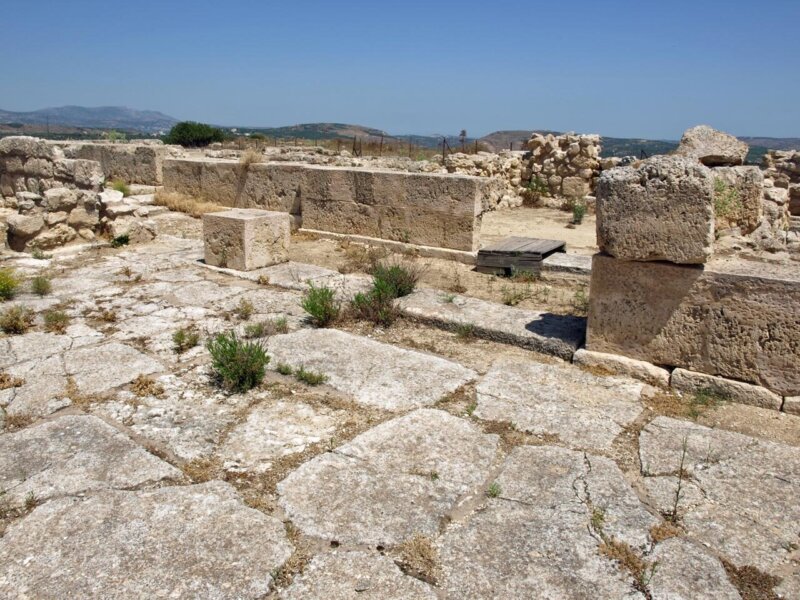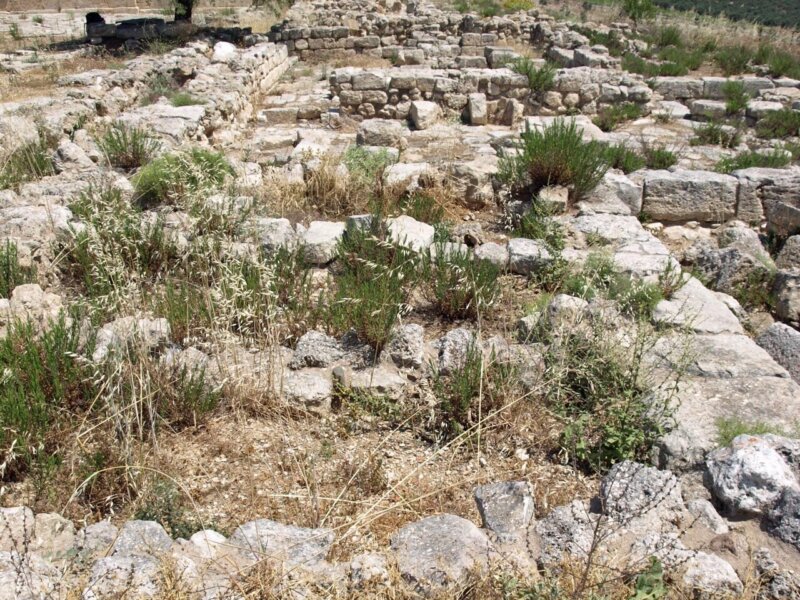The “Palace” at Galatas was only discovered and excavated in the early 1990s. The site is located 30 kilometres south of Heraklion, near the villages of Galatas and Arkalochori. From the site there are fine views of the surrounding countryside. The site is of particular importance as it contains a palace built only in one period, the neopalatial. Other palace sites contain remains from several palaces built at different times which often involved the levelling off and destruction of layers by the builders of the later palace and makes it more difficult to understand the architecture that remains.
Excavations began in 1992 and in 1997 the archaeologist responsible for the excavations, George Rethemiotakis, announced that a new Minoan Palace had been found in the middle of a Minoan town. The excavation of the site was completed in 2005 although excavations continue in buildings outside the palace itself.
The large, paved central courtyard of the palace runs north-south and measures 16 metres by 32 metres. It was originally surrounded by a four-wing building. Of the four wings the East wing is the best preserved, while the west and south wings are in very poor condition. The north wing has now also been excavated. The north end of the central court has a face of ashlar masonry and some 50 blocks have masons’ marks on them. All the original frescoes have unfortunately been lost although a few fragments remain.
Although the palace at Galatas dates from the New Palace period, a thriving town was already in existence on the hillside in the Old Palace period. A building in the West Wing of the later palace showed evidence of centrally controlled activity in a non-palatial setting. In a building no more than 40 square metres there was evidence that the grinding of grain was being organised on a scale much larger than would be necessary simply for the people living there. Seventy grinders and querns were uncovered as well as hundreds of drinking vessels, which suggested that feasting ceremonies may have taken place in the rooms on the upper floor of the building. Some of the ceramics were from Knossos and Phaistos and part of an ivory handle from a sword was also found suggesting a high profile individual either lived in the building.


